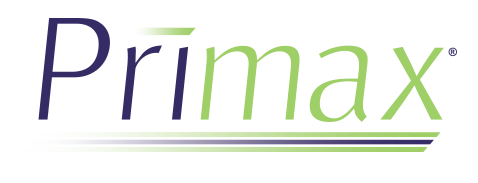By: Chris Joy, Principal, Advisors Plus Consulting
Now that we have closed out 2022, a very active year in payments and financial services, experts are looking to key market trends that could impact 2023. When highly informed corporate leaders like Jamie Dimon and Jeff Bezos are waving red flags, it’s a good indication that we need to pay attention to the signals around us. Below are five major market trends that could influence the year ahead.
- The Economy – Most commercial and investment banks predict a challenging economic environment for 2023. Almost universal expectations are in place for very low economic growth, with high odds of a shallow – but somewhat lengthy – recession. Inflation in comparable year-over-year terms is expected to decline in 2023, but the compounding effect and the supply-driven components (like energy) will continue to impact consumers and businesses. Interest rates are expected to rise at a slower pace through late summer, when the federal funds rate is forecasted to peak around 5.00-5.25%, with the prime rate forecasted to peak around 8.00-8.25%. At that “terminal rate,” the Federal Reserve is expected to pause – and possibly lower – the federal funds rate by the end of the year.
These measures point to decreased discretionary income available to consumers and increased challenges for businesses. Lower savings rates, fewer loan pre-payments and selective borrowing for mortgage and commercial loans are expected to extend into 2023. Raising deposits may be a critical mission for many institutions looking to fight off outflows. Opportunistic spots for lending may include:
- Auto lending as used car prices fall and new car inventory increases.
- HELOCs and personal loans as consumers consolidate debts.
- Credit card usage as consumers supplant savings for emergency spending.
- Credit Risk – Expect delinquency and loss rates to rise now that stimulus payments and COVID accommodations are in the rearview mirror. Unemployment and bankruptcy filings may also increase from recent experience. Financial institutions will want to consider risk tolerance carefully. Now is a good time to review forecasting models for risk by testing the input variables.
The future of federal student loan debt is still uncertain, leaving borrowers unsure of whether or not their debt will be forgiven or if they will have to resume payments in June. The latter will put pressure on those borrowers who have not been accustomed to making payments over the last several years.
Lastly, the value of some collateral may be stressed, as used car values decline and some housing markets experience falling prices. Controlled and opportunistic lending practices, along with planning for effective collections, will be mainstay activities throughout 2023.
- Expanding Payment Options – The options for making payments will continue to accelerate. FedNow is scheduled to go live mid-summer, which will provide another source for real-time payments with promising commercial applications. Additionally, buy now, pay later (BNPL) options continue to see explosive growth and will soon include a self-funded Apple offering. As merchants continue their attempts to avoid interchange fees, pay-by-bank mechanisms using platforms such as Venmo and Zelle are being explored. Interest in cryptocurrency, though damaged, will likely resurrect at some point. The Federal Reserve Bank of New York is conducting active tests with a handful of banks regarding a central bank digital currency (CBDC), assessing the impact as part of a network of financial institutions.
- Regulations – It would be difficult to mention all the paths the regulatory bodies may take in a single paragraph, but here are some of the oft-mentioned regulatory topics affecting payments in particular:
- Expansion of Regulation II to provide two unaffiliated networks for debit card-not-present transactions (effective July 1, 2023).
- Consumer Financial Protection Bureau (CFPB) pressure and the threat of UDAP on overdraft fees.
- Credit Card Competition Act (CCCA) will negatively affect credit card interchange. The bill has been written but has yet to be scheduled for a vote. There is always a concern the bill can be attached to other major legislation. Competition, in general, is a recurring theme from regulators and could expand into requirements around disclosure and advertising in the coming year.
- Inclusion, accuracy and error resolution in credit bureau reporting.
- Regulations being evaluated and written for BNPL and cryptocurrency.
- The CFPB is maintaining the 2022 safe harbor for penalty fees into 2023.
- Open Banking – Many analysts see open banking – defined as consumer-permissioned, secure sharing of financial data via API – making considerable inroads in 2023. Most of the current common use cases involve fintech applications in areas such as money management and account aggregation. Future use cases could involve easier application processes and loyalty programs. Strategically and creatively integrating open banking solutions into customers’ financial toolkits can help solidify institutional loyalty and help encourage financial well-being in the face of 2023 challenges.
While the economic outlook for the new year is still unknown, we will likely see yet another robust year in the banking and payments space. We must continue to monitor the market for trends, new developments and potential issues that could help define the industry in 2023.
Christopher Joy is a Principal Consultant with the Credit Card practice at Advisors Plus, Primax’s consulting partner. Chris advises financial institutions on issues involving portfolio growth, profitability enhancement, reward programs, and the competitive and regulatory environments. Chris has earned an industry-wide reputation for creating balanced, effective and workable credit card portfolio solutions for his clients. His 30+ years of experience in managing, growing and optimizing credit card portfolios provides unique insight when assisting clients in the highly competitive credit card marketplace.
Before joining Advisors Plus, Chris served as VP and Manager of Portfolio Profitability for National City Bank (now PNC Bank) and as a financial analyst with Bank One (now Chase). Both organizations were in the top 20 US credit card issuers by loan volume. Chris holds a BBA in Business Administration from Ohio University. He is a frequent speaker at industry events and is often cited in financial institutions publications. Chris also served on the faculty of the CUES School of Payments.




